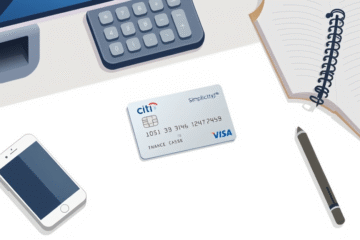Predatory Lending has become a significant concern in today’s financial landscape, affecting countless vulnerable borrowers across the nation.
These deceptive practices often trap individuals in cycles of debt through unfair terms and excessive fees.
Understanding how to identify and avoid predatory loans is crucial for protecting your financial well-being.
This comprehensive guide will explore the various aspects of predatory lending, its impact on borrowers, and essential strategies for safeguarding yourself against these harmful financial products.
Understanding Predatory Lending Practices
Predatory lending consists of unfair or deceptive practices by lenders imposing unfavorable loan terms on borrowers. It takes place in contexts where borrowers are often desperate or lack comprehensive understanding. The loans usually feature high fees and inflated interest rates, creating a financial trap.
Typical characteristics of predatory loans include:
- Misleading loan terms
- Excessive fees
- Loan flipping
- Asset-Based Lending
To better understand predatory lending, visit the Consumer Financial Protection Bureau. In this environment, lenders exploit the borrower’s vulnerabilities, focusing more on benefiting the lender at the borrower’s expense. These loans are particularly harmful as they create a cycle of debt that is challenging to escape.
The Consumer Financial Protection Bureau provides informative resources on predatory lending practices, enhancing borrower protection awareness. Individuals should thoroughly understand loan agreements and only engage with reputable lenders.
The Impact of Predatory Loans on Borrowers
- Financial Distress: Borrowers may face severe financial challenges when engaging with predatory loans due to high interest rates and fees Learn more.
- Emotional Turmoil: The stress of mounting debt can lead to anxiety and depression, affecting mental health and personal well-being significantly Read detailed insights.
- Perpetual Debt Cycle: Borrowers often struggle to escape the cycle of debt induced by unfair loan termsleading to financial stagnation.
- Asset Loss: High risk of foreclosure or repossession can arise due to inability to meet loan obligations, threatening stable housing.
According to financial expert John Doe, “Predatory lending not only traps borrowers in financial quagmires but also undermines their emotional resilience” Read the expert’s analysis here.
- Inability to Save: Resources are diverted towards managing debt payments, undermining long-term financial goals.
- Impaired Credit Score: Mismanagement of predatory loans often results in late payments, lowering credit ratings and future borrowing ability.
Predatory lending enhances vulnerability by exploiting unsuspecting borrowers through deceitful terms Explore comprehensive analysis.
Recognizing Unfair and Abusive Loan Terms
Predatory lenders often use unfair tactics to trap borrowers in unfavorable loans, making it crucial to recognize these signs. High-interest rates beyond industry norms or rolling fees into the principal loan amount can signify predatory lending practices.
Borrowers should pay attention to conditions like unaffordable terms, prepayment penalties, or balloon payments which are due suddenly. Moreover, excessive fees disguised in small print can increase the debt burden.
Additionally, aggressive sales tactics and misleading advertisements that promise deals too good to be true are red flags. To visualize the differences, consider the table below:
| Fair Loan Terms | Unfair Loan Terms |
|---|---|
| Transparent fees | Hidden fees |
| Reasonable interest | Exorbitant interest |
| No prepayment penalties | Hefty prepayment fines |
For an in-depth guide on identifying these terms, refer to Predatory Lending Guide.
Stay informed and safeguard yourself from falling victim to unethical lenders using deceptive practices.
Vigilance is key in protecting your financial well-being.
Steps to Safeguard Against Predatory Loans
- Research your lender: Before committing, ensure the lender is reputable by checking reviews and state licensing. Use resources like the NJ Department of Banking for verification.
- Understand the loan terms: Never sign without fully comprehending the details. If unsure, consult a financial advisor. Reference sites like NerdWallet for guidance.
- Compare multiple offers: Gather quotes from at least three lenders. This practice ensures you’re getting a fair deal. Utilize tools from Bankrate to assist in comparisons.
- Check for hidden fees: Scrutinize any additional charges. Be wary of “junk fees” that can inflate the loan cost. Learn more through resources like Los Angeles County.
- Question and verify promises: If a deal sounds too good, it likely is. Cross-check offers with trusted financial experts. Advisors from Deed Street Capital can offer insights.
- Improve financial literacy: Enhance personal financial knowledge to better assess lending risks. Engage with educational content, such as those provided by InCharge.
Identifying Reputable Lenders
Understanding what defines reputable lenders involves examining several core factors that distinguish them from predatory entities.
Firstly, transparency is crucial. Lenders should clearly delineate terms without hidden fees or deceptive practices.
Experian’s guide on red flags emphasizes the importance of clarity in lending practices.
Secondly, a reputable lender conducts thorough credit checks. Skipping this step is a red flag for potential scams.
Always look for verification methods such as licenses and certifications to ensure authenticity.
Build your checklist with these essentials:
- Transparent terms and conditions
- Verified lender credentials and licenses
- No upfront fees or unusual charges
Utilize resources like the Consumer Financial Protection Bureau to confirm lender legitimacy and access further details.
Trustworthy financial institutions prioritize your comprehension and approval of loan terms, preventing unforeseen surprises down the road.
Warning Signs of Loan Offers Too Good to Be True
- High-interest rates: Predatory loans often feature exorbitantly high interest rates that can quickly lead to financial ruin. Beware of rates substantially above market averages.
- Pressure tactics: Offers that rush you into making rapid decisions or signing agreements can be predatory. Stay cautious of high-pressure sales tactics.
- Guaranteed approval: Loans that assure approval without proper credit checks and verifications are major red flags. Genuine lenders assess your financial status rigorously.
- Hidden fees and terms: If terms or fees are concealed or unclear, this could signal a predatory offer. Always seek a detailed, transparent explanation of all costs involved.
“Offers that seem too good to be true often are,” warns the Consumer Law Chicago. Understanding these signs can help avoid falling into debt traps.
It’s crucial to recognize these warnings when considering loan offers that might seem overly beneficial. Take these indicators seriously to safeguard your financial future.
Protecting yourself from predatory lending requires vigilance and education.
By staying informed, carefully reviewing loan terms, and working with reputable lenders, you can make sound financial decisions that support your long-term economic well-being.



0 Comments